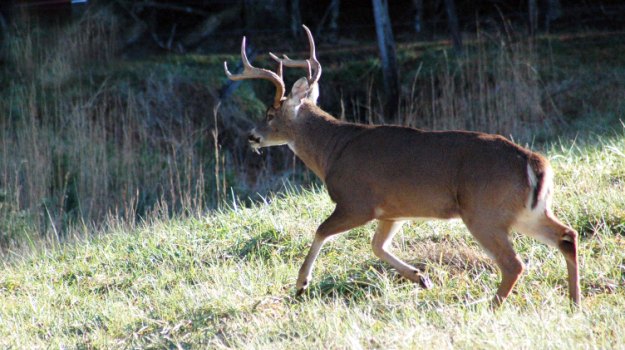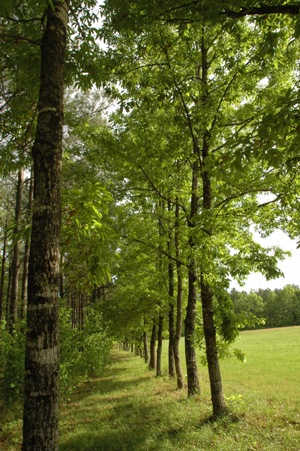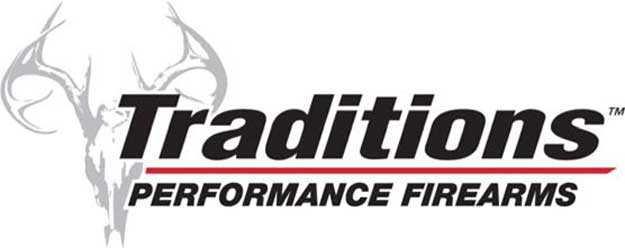
Editor’s Note: Jesse Raley is the marketing manager for Nativ Nurseries. Good wildlife management and increasing wildlife on the properties you own or hunt on involves much more than just planting food plots. To have more wildlife on your property, consider planting fruit trees and nut trees and various types of grasses and shrubs that produce food and cover for wildlife. We’ve asked Raley to tell us why we need to consider planting trees, shrubs and native grasses to increase food and habitat for wildlife. By starting now, you can decide where and when to plant additional food and habitat for this fall.
According to Raley, “The purpose of Mossy Oak’s Nativ Nurseries is to get people closer to nature and to provide different species of plants for wildlife. If a landowner wants to improve his or her property for wildlife or do habitat restoration, and wants to purchase nut trees, fruit trees, native grasses or wildflowers, we try to provide the information and the products to allow that landowner to improve the land for the wildlife that lives on his property and to draw wildlife to his property.
 “Historically, fruit trees, nut trees, native grasses and other plants designed to help wildlife have been planted in the fall. However, we have developed a process called the Rapid Mast root system. Typically, trees that consumers buy from a nursery are contained in a 3-gallon pot or are bare root seedlings - one, long, skinny root. The Rapid Mast root system will create ten times as many feeder roots, allowing for more growth of the tree, because the more root system your plant has, the faster the tree grows. This system enables trees to produce more acorns quicker. For instance, a typical bare root oak tree usually will produce acorns in about 20 to 30 years. Our oak Rapid Mast trees will start producing acorns in 5 to 10 years, and some of our trees will produce acorns in as quickly as 3 years.”
“Historically, fruit trees, nut trees, native grasses and other plants designed to help wildlife have been planted in the fall. However, we have developed a process called the Rapid Mast root system. Typically, trees that consumers buy from a nursery are contained in a 3-gallon pot or are bare root seedlings - one, long, skinny root. The Rapid Mast root system will create ten times as many feeder roots, allowing for more growth of the tree, because the more root system your plant has, the faster the tree grows. This system enables trees to produce more acorns quicker. For instance, a typical bare root oak tree usually will produce acorns in about 20 to 30 years. Our oak Rapid Mast trees will start producing acorns in 5 to 10 years, and some of our trees will produce acorns in as quickly as 3 years.”
Even old timers used the idea of having nut and fruit trees on their lands to build up wildlife populations. Back in the days before the Great Depression of the 1930s, the woods were full of food, including apple, pear, plum, pecan and walnut trees as well as blackberries and every kind of fruit and nut you could imagine. Members of hunting clubs often were required to plant five fruit or nut trees every year on a club's property, which meant there was plenty of food for the animals and the humans. But then when the Depression came, the hungry people from the cities came to the woods to get the fruit and nuts there. They didn't ask the landowners' permission but simply trespassed, left cattle gates down and broke down fences. To protect the land, farmers cut down all the fruit and nut trees. Later in the 1940s, many hunting clubs started the old tradition again.
You can learn more about Rapid Mast seedlings by visiting the Nativ Nurseries YouTube page.
Tomorrow: Jesse Raley with Nativ Nurseries Says Plant a Variety of Trees to Improve Your Property for Wildlife



























